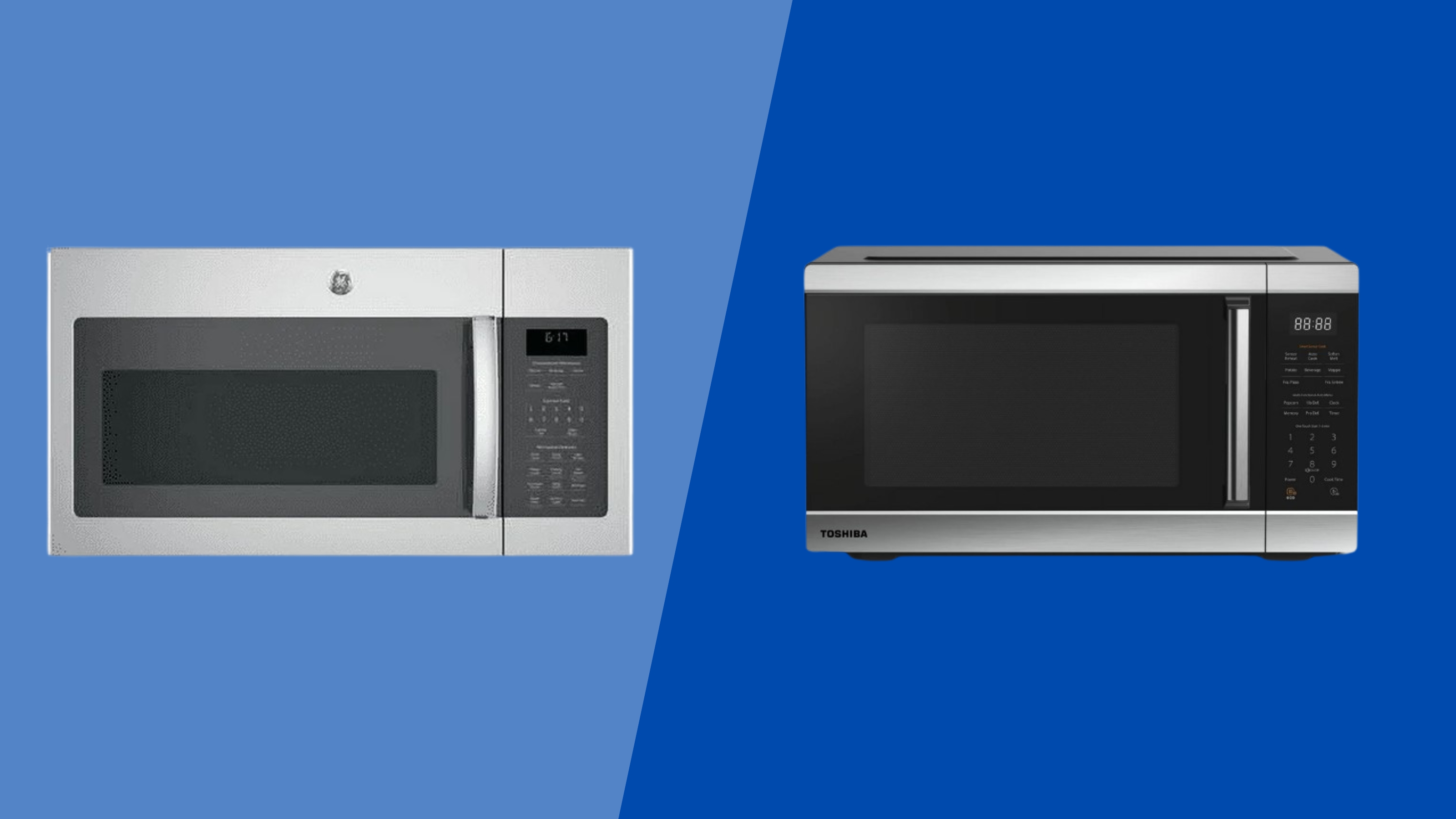Microwaves are a quick and convenient way to prepare meals, heat leftovers, defrost food, and save energy. But when it comes to making a purchase, which is better: countertop or over-the-range microwaves?
With so many choices, deciding which is the best microwave is best for your home can feel overwhelming. To help simplify things, this feature compares two bestselling types: countertop appliances, like the Toshiba WSI-EM22AST, and over-the-range ones, like the GE JVM6172SKSS.
While both microwaves essentially do the same job - cooking and defrosting food - they have slightly different features, and which one you buy will depend on your kitchen space, budget, and needs.
But how do the two microwaves differ in design, features, performance, and price? Which one is better suited to you and your needs? Keep reading our countertop versus over-the-range microwave guide to find out.
Countertop vs over-the-range microwaves: Price & value
Mr. Appliance's President Ron Shimek told Top Ten Reviews: "Countertop microwaves offer flexibility in placement, are portable, generally more affordable, and easy to replace. However, they take up valuable counter space and take longer to cook food."
"By contrast, over-the-range microwaves save counter space, provide built-in ventilation and lighting for your stove, and enhance kitchen aesthetics. Drawbacks include installation complexity and reaching over a hot stove to use the microwave."
While countertop microwaves take up more space, they tend to be cheaper than over-the-range ones, plus there are no installation costs. The price tag varies depending on the design, features, and size, and the average price ranges from $50 to $400.
By contrast, over-the-range microwaves are generally more expensive, starting at around $200 for a budget appliance and $400 for a midrange like the Frigidaire Gallery 1.7 Cu. Ft. Over-the-Range Microwave (Best Buy), and more expensive models like the LG LMHM2237ST (Best Buy). Equipped with top-of-the-range Sensor Cook technology and a powerful fan, this microwave is a stand-out model that thoroughly and evenly cooks food.
It's important to note that installation costs and the appliance's price can vary.
As expected, over-the-range microwaves on the higher end of the price spectrum are more durable and have better features than cheaper models.
- Verdict: As with most appliances, the more you spend, the more features you can expect. If you're on a budget and have the space, a countertop microwave does the job well, is portable, and is easy to take if you move house. However, an over-the-range microwave is a good option if you want a space-saving appliance. Bear in mind that in addition to the cost of the appliance, you will need to factor in installation costs.
Countertop vs over-the-range microwaves: Features & functions
Countertop microwaves tend to be pretty compact (typically 21–24" x 16–20" x 13–15"). As they are freestanding, they are a good choice for students in dorm rooms, renters, or people who don't want to spend time and money installing the appliance in their kitchen.
The big selling point is that you can put them wherever you have space in your kitchen and move them around. All you need is a plug socket and space above them for ventilation. They are also easy to take with you if you move house.
If you are limited in space, you can choose one of the best compact microwaves. However, consider the internal capacity, ranging from 0.5 cubic feet (which should fit a 10-inch plate) to over 2 cu. ft. (big enough for large cookware).
However, countertop microwaves eat up valuable surface space that could be used for food prep or storage. So, if you have a small kitchen, you might prefer to save square footage and invest in an over-the-range microwave instead.
You’ll save a ton of counter space, which can make way for one of the best air fryers!
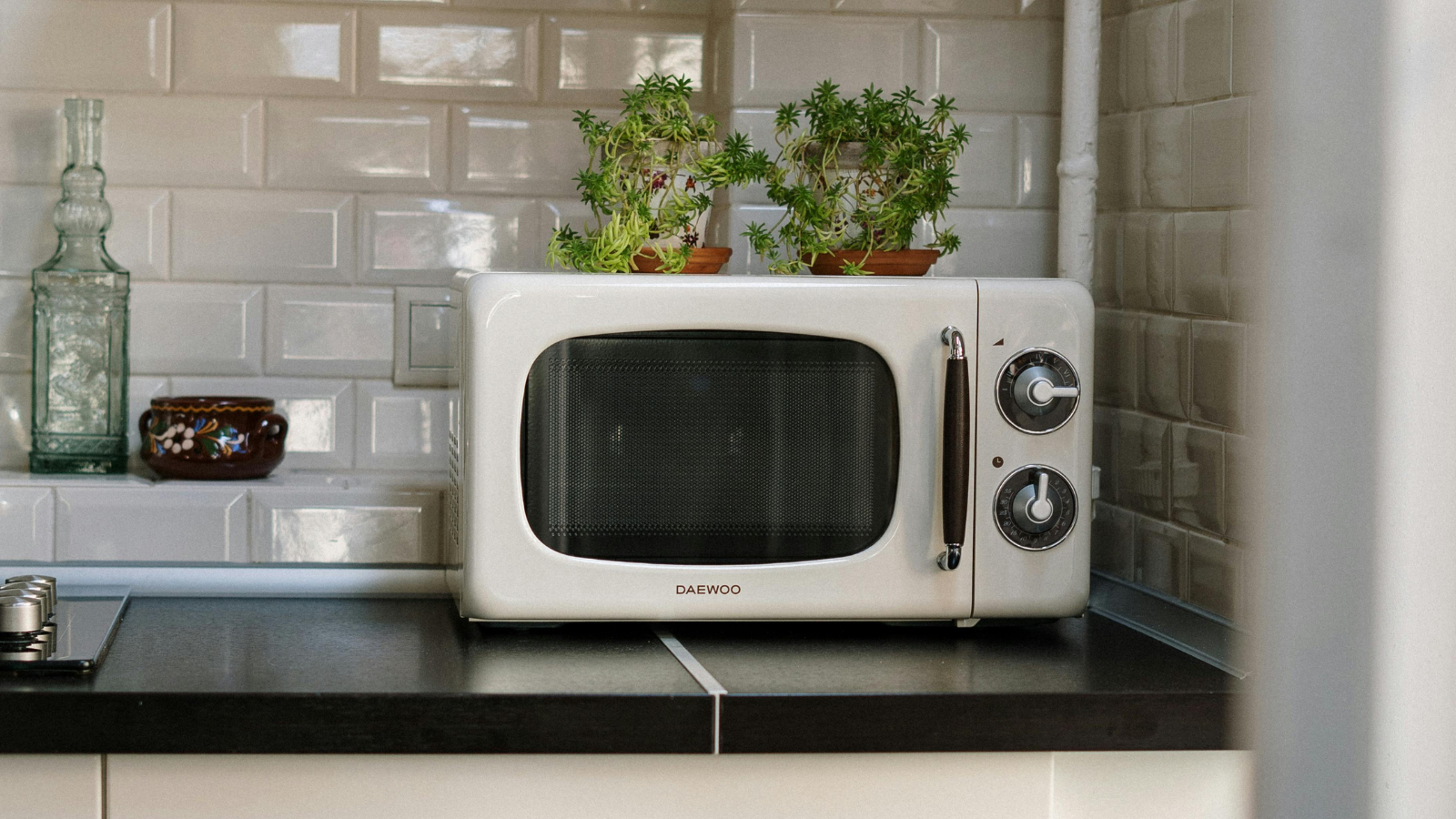
As the name suggests, over-the-range microwaves sit above a range or cooktop and double as a vent—effectively working as two appliances. That's why they are often a big favorite for home cooks.
They tend to be bigger than countertop appliances, measuring between 29 and 30 inches so that they can fit snuggly above your oven. Depending on the model type, these units range in depth and height.
While even the best over-the-range microwaves can be pretty effective at removing steam, heat, smoke, oil, and odors from your cooking, they aren't nearly as powerful (or as quiet) as a separate vent hood, so bear this in mind before purchasing.
Another downside to over-the-range microwaves is that getting food in and out isn't easy, particularly for kids or shorter adults who might struggle to reach the machine. This runs the risk of causing an injury or spilling hot food. Countertop microwaves, on the other hand, are easily accessible.
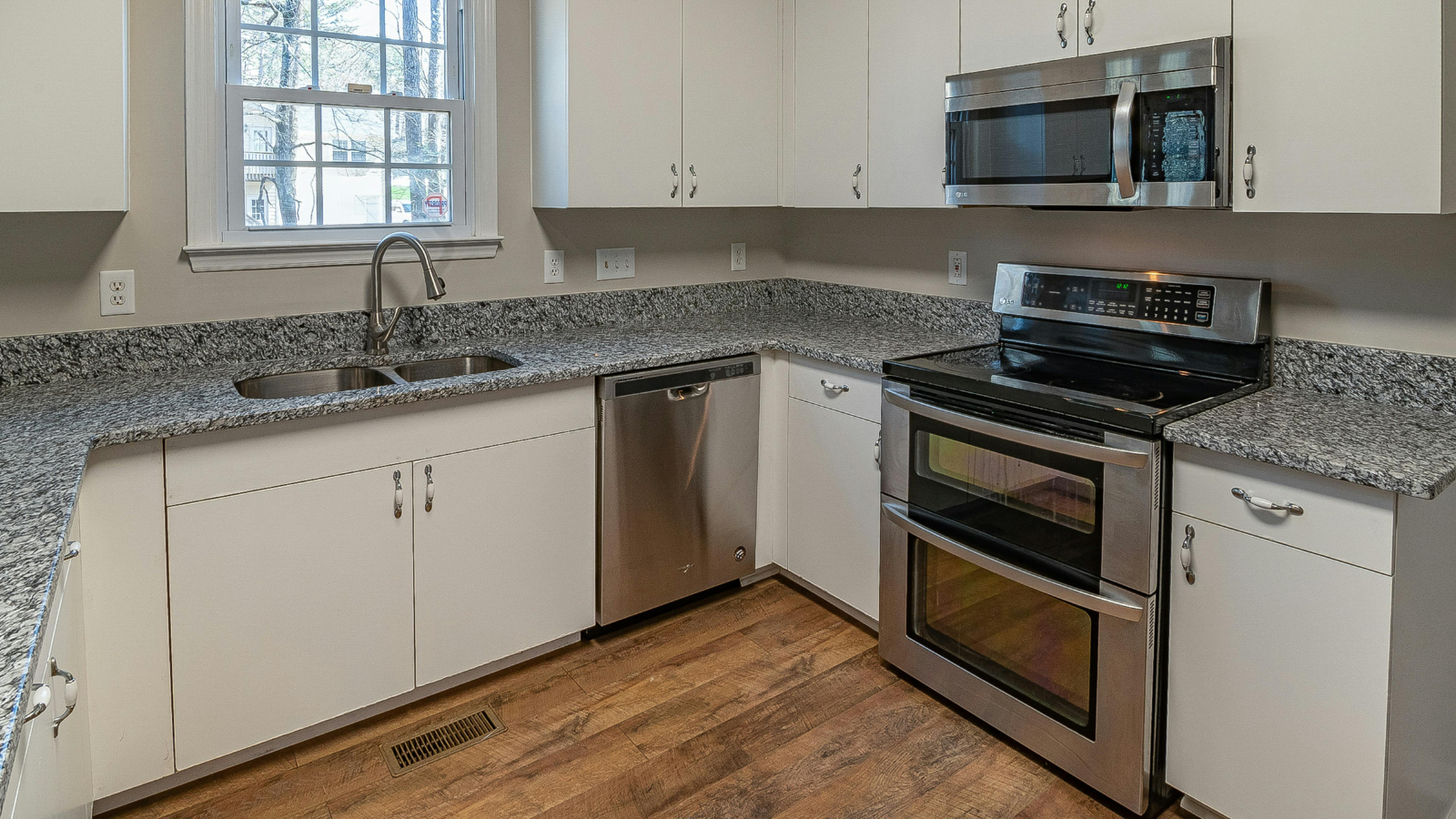
Regarding features, countertop microwaves function as just a microwave, while over-the-range models double as a hood vent for kitchen stoves, providing air circulation and overhead lighting.
Countertop microwaves are cheaper, making them more budget-friendly, but that often equates to fewer features.
One of the main areas to look for when buying a countertop microwave is wattage (cooking power), with models ranging from 500 to 1000 watts. The higher the wattage, the quicker the food cooks.
Another consideration is whether you want a microwave with automatic defrost, quick start, presets that take the guesswork out of how long to cook your food, or sensors that calculate cooking time based on the amount of steam coming from your meal or snack.
You might even want to consider a multi-purpose microwave that doubles as a convection oven, like the Breville Combi Wave 3-in-1, a toaster, or a rotisserie. However, as expected, extra features like this add to the price tag (you can find the Combi Wave 3-in-1 online at Breville).
Parents might also opt for a model with a child safety lock.
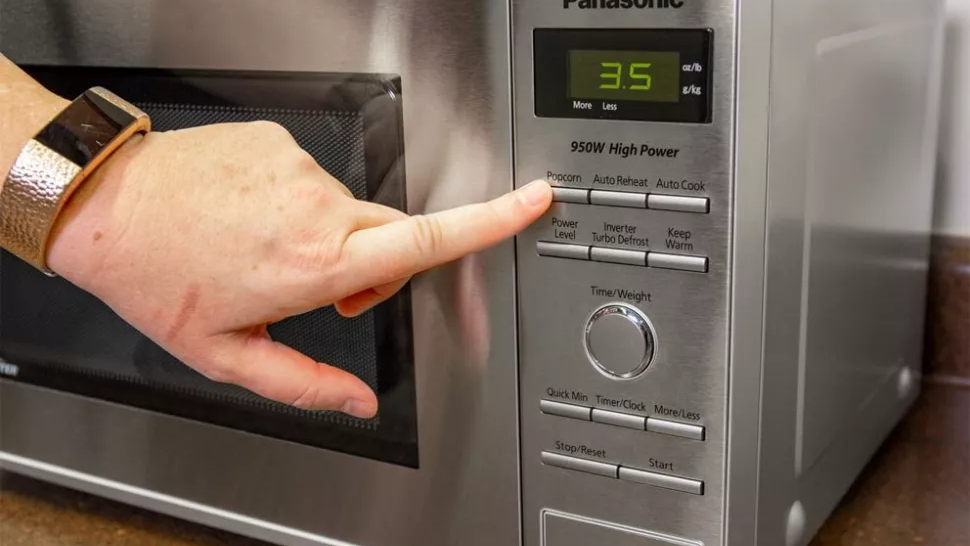
When it comes to over-the-range microwaves, you'll also want to think about wattage, features, and mounting options, and you'll find these models come with a cooktop light. Then the main consideration is the ventilation.
These appliances use a vent fan to remove steam, smoke, and odors from your range. Most can be vented to outside your home or re-circulated back into the kitchen. If you opt for outdoor ventilation, just be aware that the fans used in these appliances aren't as powerful as ones found in a regular range hood.
More expensive over-the-range microwaves use linear (rather than circular) fans, which tend to be quieter, while cheaper ones combine the vent and cooling fan, making them much louder when turned on.
- Verdict: A countertop microwave is ideal for a quick, easy, and budget-friendly option. However, if you need to save space and enhance ventilation, an over-the-range microwave is a great investment as it doubles as a hood vent. Choose based on your needs.
Countertop vs over-the-range microwaves: Performance
Countertop microwaves are at the counter level, making them accessible to most people. All you need is a plug nearby, and you are good to go. On the other hand, over-the-range microwaves are higher up, so getting food in and out isn't always practical, particularly for shorter people or children. There's a risk of spilling hot food and injury.
These kitchen appliances are cheaper than over-the-range but reliable and easy to use. Meanwhile, the design of over-the-range microwaves doesn't allow for a big or powerful fan, meaning they don't always filter and move air efficiently. This can also make the ventilation very noisy and noisier than a standard wall hood, which offers better air filtration.
When considering fan speed and performance, look at the CFM, which stands for Cubic Feet per Minute - the measurement of the velocity at which a range hood can move air. The highest rating you will typically find with an over-the-range microwave is 200-400 CFM.
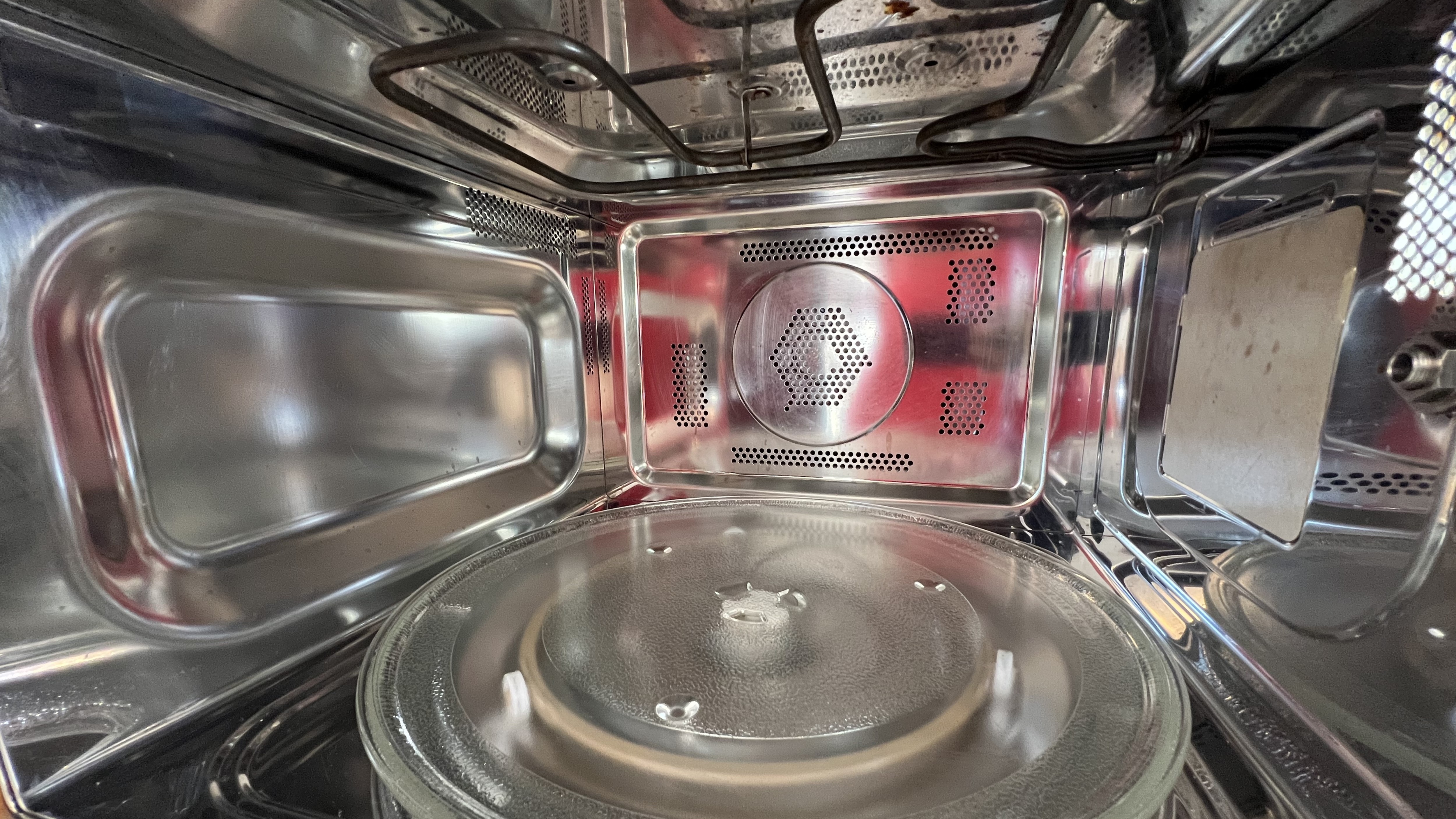
Ron Shimek, President of Mr. Appliance, a Neighborly Company, told Top Ten Reviews: "Since countertop microwaves don’t usually have their dedicated electrical circuit, they are smaller in wattage and do not cook as much as an over-the-range microwave. Countertop microwaves also take up a lot of countertop space.
"Over-the-range microwaves are two appliances in one: a microwave and a vent hood. They are often more powerful because they have their dedicated electrical circuit, which lets them cook faster."
- Verdict: When it comes to performance, both countertop and over-the-range appliances perform well as microwaves, with the latter packing a meatier punch when it comes to power. But the noise and ventilation on over-the-range models are slightly less efficient compared with a separate wall hood.
Countertop vs over-the-range microwave: which is better?
Ultimately, deciding between a countertop and an over-the-range microwave comes down to a few factors: space, budget, and personal situation.
If you have enough counter space and don't want to spend too much on a new kitchen appliance, a countertop microwave will be the best option. This type of machine is portable - ideal for renters, students, and when you move house - plus it doesn't require any construction to mount it and set up the ventilation.
Over-the-range microwaves take up less counter space, but they can be more expensive and come with extra installation costs, which may vary. If you are a tenant, you won't want to jeopardize your lease by drilling into the walls and making holes for ventilation, so in this instance, a countertop microwave will be a better choice.
However, if you are a homeowner, have a friendly landlord who is willing to let you make changes in your home, want to save counter space, or like the aesthetic of having your appliance built into the wall, an over-the-range appliance is the way to go. They also provide ventilation, which home cooks will appreciate (although bear in mind that the fans in these appliances are not as powerful as standalone hood vents).
In summary, countertop microwaves are convenient, affordable, and easy to set up and use. Over-the-range microwaves require some construction but are a neat way to save space while tying into the aesthetic of your kitchen design.
